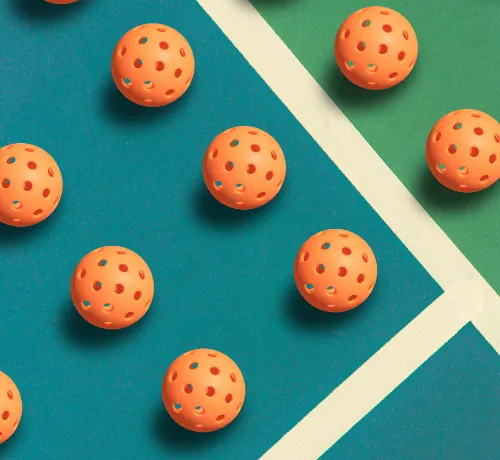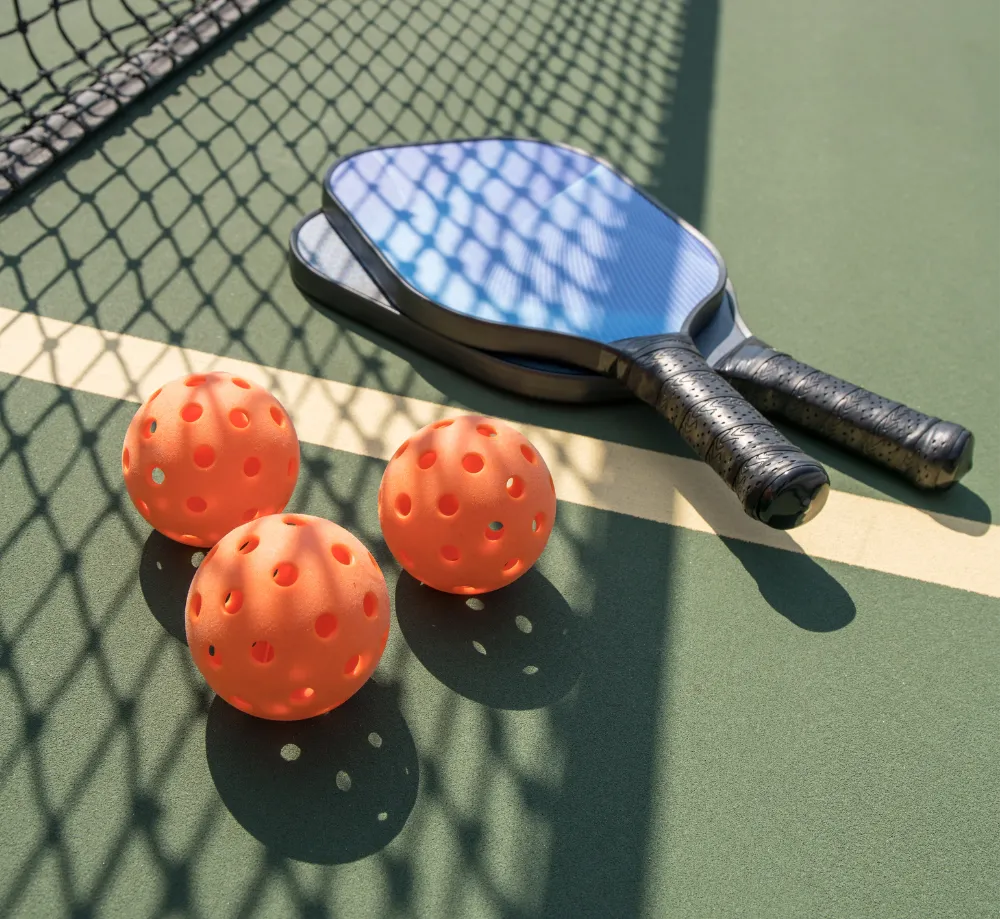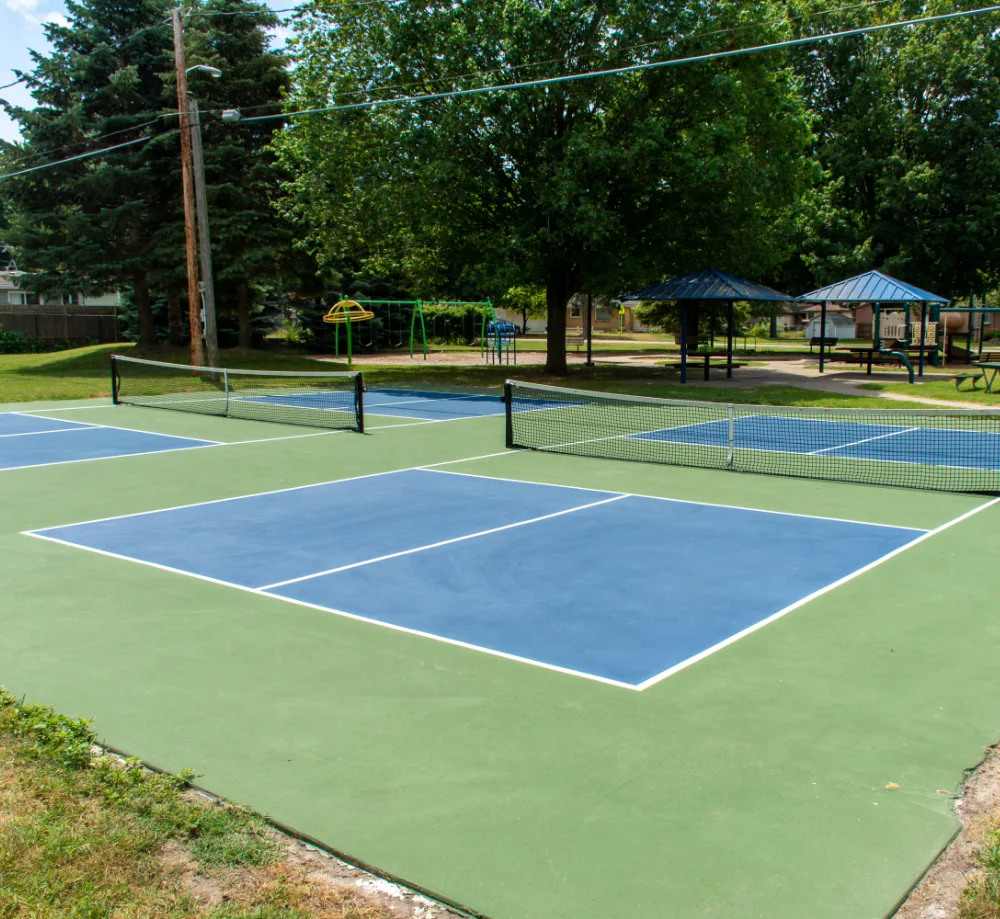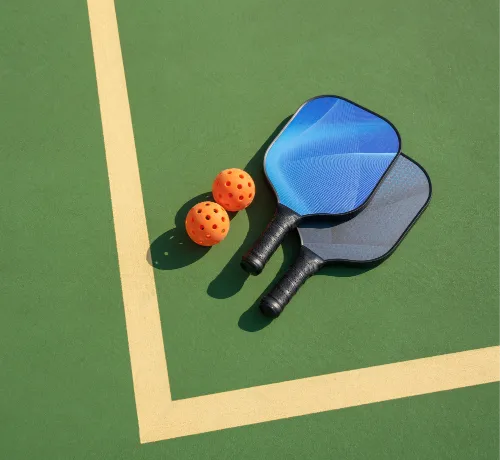
Welcome to the Pickleball Hub: Where Passion Meets Paddles.
Introduction to Pickleball
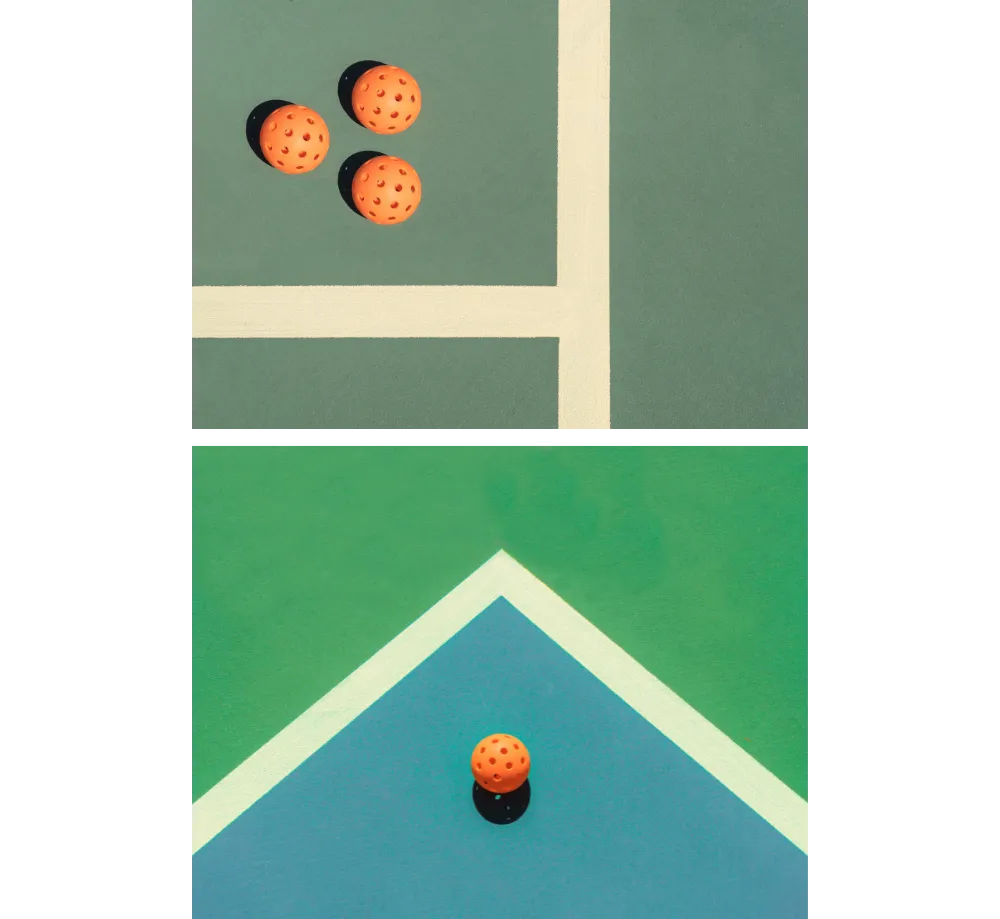
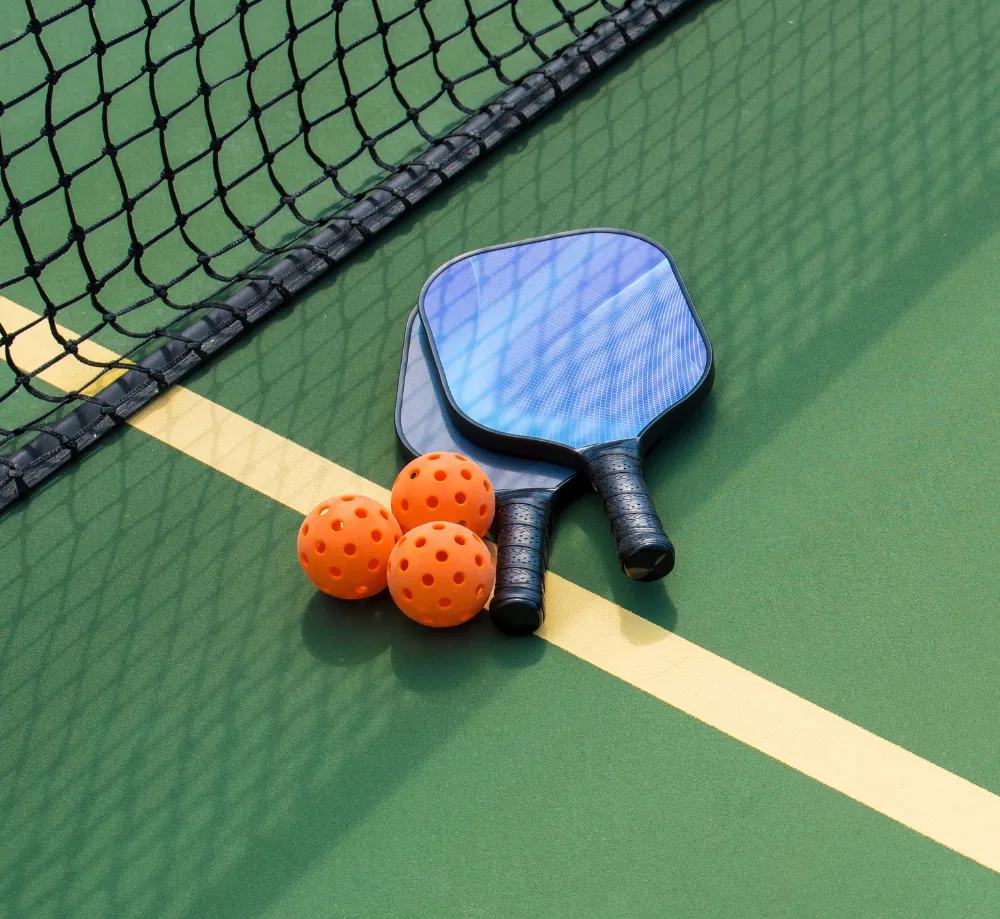
Gear Up and Get in the Game:

- Forty-four feet by 20 feet is the average court size for pickleball and is divided into three zones known as “the right box,” “the left box,” and “the kitchen,” with the latter being referred to as the “non-volley zone.”
- Each court has two sidelines and two baselines, along with a center line on each side. These lines create two non-volley lines, forming two non-volley zones known as “the kitchen.” The kitchen is the area on each side of the court that extends 7 feet from the net.
- The center line divides each side into two service courts, “the left service court” and “the right service court.”
- When serving the pickleball, it must be hit underhand from behind the baseline when serving and directly into the opposing team’s service court.
- When served, the ball must clear the net and land within the bounds of the opponent’s court.
- An important rule in pickleball is the double bounce rule. The double bounce rule says the ball bounces once on each side before either team may start volleying the ball in the air.
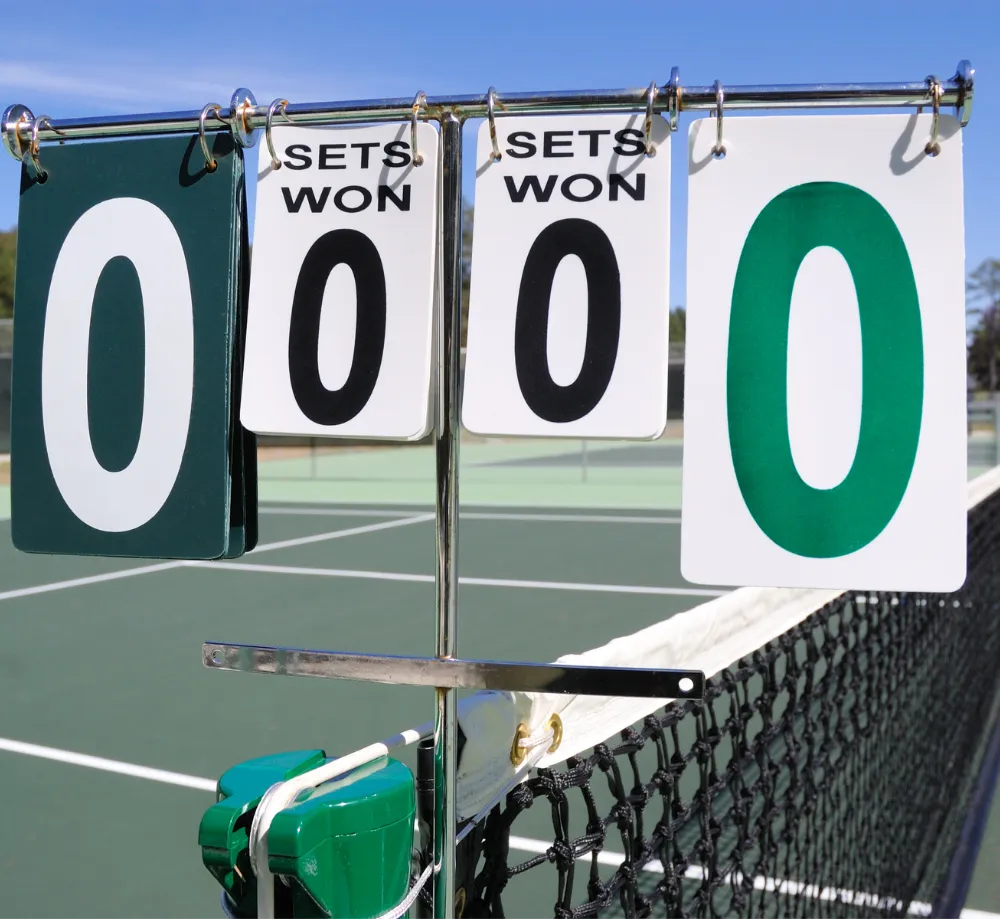
- In pickleball, the usual score is 11 points using a unique scoring system.
- The beginning of every rally starts with a serve, and points can only be won by the serving team by winning a rally.
- In playing doubles, each player on a team has a chance to serve. Before serving the ball, the server must call out the score, which consists of 3 numbers, their team’s score first, then the opposing team’s score, and then the serve number, which may either be 1 or 2.
- The player in the right service court always serves first. If you win the point, the two players will switch places, letting the first server serve from the left service court. The serving team will continue to serve and switch places until a fault is committed or they lose a rally.
- When a serving team loses a rally, the 2nd server will serve from the current position.
- When a serving team loses another rally, the opposing team will have two serving chances, called a Sideout. A side-out means the possession of the ball is over.
- The opposing team earns the privilege to serve, and the players switch sides of the court. Both players get their chance to serve and earn points.
- The serving team earns a point if the opposing team fails to return the ball successfully.
- A two-point advantage is usually crucial to win the game when both teams score 10 points.
- It is important to keep track of which service court you serve from. The service must come from the right service court if your score is an even number, while the service must come from the left service court if your score is an odd number.
Serving
Serving is a crucial aspect of pickleball and sets the game in motion. The serve is initiated from the right-hand side of the court and must be performed underhand, with the server hitting the ball below the waist. The serve must clear the net and land within the opposite diagonal court. Once the serve is in play, both the server and the receiver must allow the ball to bounce once before returning it. This unique rule differentiates pickleball from other racquet sports. When serving, players aim to place the ball strategically, applying spin or power to make it challenging for their opponents to return effectively. An accurate and well-placed serve can set the tone for the point and provide a strong advantage.
Exception at the Beginning of the Game
At the beginning of each game or when the score is even, the serving team has a special advantage. Only one player serves, starting from the right-hand side of the court and serving diagonally to the opponent's service court. The serve continues until a fault occurs. In doubles play, the serving team's partner does not serve until the first fault is made by the serving team. After the first fault, the serve switches to the opposing team, and both players on that team have the opportunity to serve. This rotation ensures fairness and equal opportunities for both teams to gain points. Once the initial serving rotation is completed, subsequent serves are performed by both players on each team.
Singles Play
Pickleball can be played in both singles and doubles formats. The court dimensions remain the same in singles play, but the strategies and movements differ. Players have the entire court to cover, which requires quick footwork, agility, and precision. The serving rules remain the same, with players serving diagonally and allowing the ball to bounce once before returning it. Singles play often involves more extended rallies and demands excellent shot placement and court coverage. Players must rely on their skills, adapt to their opponent's style of play, and effectively execute their shots. Singles play in pickleball offers a challenging and exciting experience, allowing players to showcase their athleticism and strategic prowess on the court.
Conclusion:
Pickleball's rules and gameplay, including the serving process, special exceptions at the beginning of the game, and the dynamics of singles play, contribute to the sport's unique and engaging nature. The underhand serve, coupled with the bounce rule, creates an interesting dynamic where players must time their shots and employ strategic placement to gain an advantage. The initial serving rotation ensures fairness and equal opportunities for both teams, while singles play allows players to showcase their skills and adaptability. Overall, pickleball offers a thrilling and competitive experience for players of all levels, combining strategy, athleticism, and finesse in a sport that continues to captivate and attract enthusiasts worldwide.
